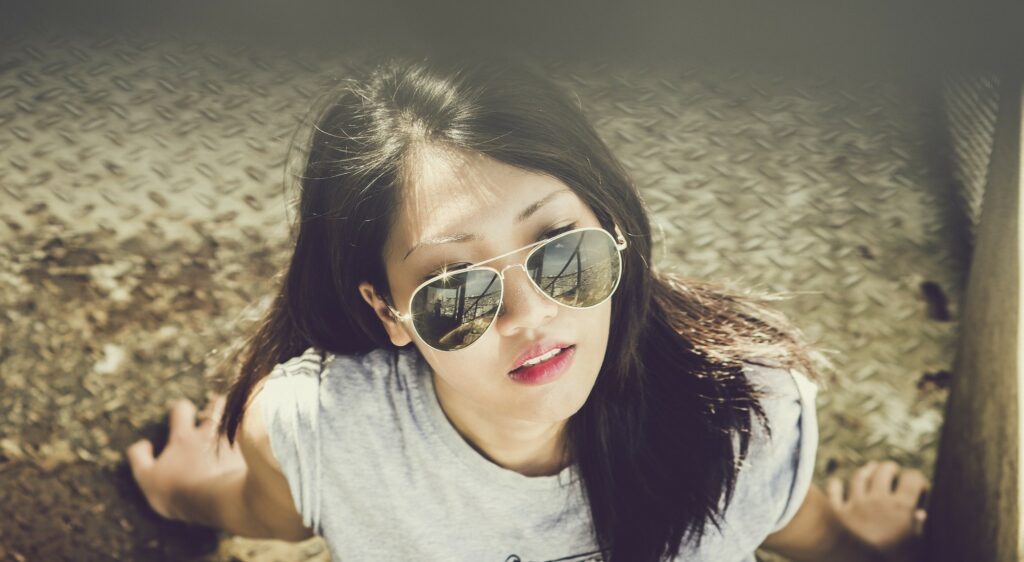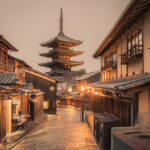
Are you traveling to Japan for the first time? Business, education, or pleasure?
Japan is, without a doubt, one of the most popular and beautiful countries to visit. Rich with culture and great food, it’s no surprise that Japan had over 31.88 million visitors in 2019. With border restrictions lightening up, Japan expects to see more visitors in the coming months.
Japan is a great place to work and learn new skills, and it’s also renowned for its top-tier education system. Whether you’re visiting or planning to stay for a while, Japanese fashion is something you should consider. Do as the locals do and read on to learn how to dress in Japan.
General Fashion Etiquette
Despite being one of the most advanced countries in the world, Japan is pretty conservative. Many places like to stick to tradition and uphold their unwritten rules.
In Japan, you can wear all the skirts and shorts you like, especially since summer is so humid. However, showing your shoulders can be scandalous. Showing cleavage is also a no-go in Japan.
It’s more common for Japanese youth to wear tank tops, but they often pair them with cover-ups. This can be a shawl, a cardigan, or a light polo.
Sportswear is generally reserved for the gym. You won’t see many Japanese people wearing leggings, sweatpants, or sports shirts outside unless they’re going for a jog.
Regardless of what you wear, it’s best to keep your appearance clean and sharp. Japanese people like to stay well-groomed, so tatty clothing may be a little out there. We also recommend bringing a versatile jacket with you.
Indoor and outdoor temperatures are like day and night. It can feel hot and humid while running errands, but it’ll get chilly when you enter a cafe.
Can You Show Tattoos?
Japan is home to some of the best tattoo artists in the world. Japanese tattoos have the most intricate designs and motifs with a deep history.
However, Japan ironically turns a wary eye to those who bear tattoos in public. Many locals have tattoos but prefer to keep them hidden for social reasons or employment.
Showing off your tattoos shouldn’t be a problem in most public places. You’ll find many other foreign visitors with exposed tattoos in metropolitan and tourist areas. However, it’s best to keep your ink hidden if you’re visiting historical sites like shrines.
Covering your tattoos at a shrine or temple is a simple sign of respect. You can wear a scarf, a lightweight jacket, or long sleeves or pants.
Tattoos and Pools and Hot Springs
Many public pools and onsens have banned people with tattoos from entering their premises. Others may require you to cover up, but you can find some private onsens where you can enjoy a warm soak (read here for advice on booking private onsens).
While younger Japanese people may pay you no mind, older generations may frown upon you. Tattoos have an age-old association with crime families in the Yakuza.
If you go to a pool or onsen that requires you to cover up your tattoos, you can use plaster for small ones. You can also check out these tattoo-friendly onsens in Japan.
Dress Codes in School
Most schools in Japan have a uniform, also known as seifuku. Uniforms consist of a sailor-esque style for girls and a military-style for boys. However, you may also see a lot of western Catholic-style uniforms.
Regardless, Japanese schools have two types of uniforms. These are the winter uniforms and summer uniforms. Winter uniforms often include blazers and thick material to stay warm during cold school days.
The summer uniform is much simpler. It consists of a blouse or light dress shirt and a skirt or slacks for girls and boys respectively.
Many schools also require specific shoes and socks and regulate haircuts for boys. If you’re looking to study in Japan, these are some things you can expect as a student.
Business Attire
Business attire is pretty clear-cut in Japan, but there are a few traits that may not be visible to the untrained eye. During the work week, you’ll find that most office workers stick to minimal or neutral attire. Black, navy, white, gray, and beige are the most common colors used by the working class.
If you’re in Japan for a job interview, we recommend you wear black or navy. A dark suit is a sign of respect. You’ll seldom see patterns like stripes or polka dots, but if there are any, they’re very subtle.
Stilts are inappropriate in a business setting, so it’s best to stick to short heels or flats. It’s also not common to wear flashy accessories to work. Remember, the goal is to fit in and blend with the crowd.
As mentioned prior, there are also certain hair requirements in Japanese companies. Women may need to put their hair in a ponytail or a bun, and men will need to maintain a short, clean cut.
Can You Wear Traditional Japanese Clothing?
There has been the occasional online discourse as to whether a foreigner can wear a kimono or a yukata. These outfits are usually present during cultural events or celebrations. While festivals don’t have a dress code, anyone is free to wear a kimono or yukata, even foreigners!
Many Japanese natives may be happy to see you embracing their culture. The only important thing is that you wear it right and respect it. There is a proper way of wearing a kimono and yukata.
Kimonos are a popular traditional Japanese garment. This is a T-shaped robe with square sleeves. These garments are more expensive than a yukata and are often made from silk or brocade.
Kimonos have seasonal variations and often come in two or more colors. Kimonos have a lot of layers from top to bottom.
When putting on a kimono, you must always wear it left over right. Only the dead wear their kimono right over left. The kimono is tube-like, and you must always keep it parallel to the ground.
Yukatas are similar to kimonos but are cheaper and come in more color variety. They’re also a little less formal than kimonos.
Dressing for Each Season
Are you planning an extended stay in Japan or visiting during a certain season? Japan’s weather and climate can range from humid to freezing depending on the time of year. Here’s what to wear for each season.
Spring
Spring is the time to bring out your skirts and shorts or some light jeans and trousers. Don’t forget to pack a jacket for chillier evenings and a raincoat or umbrella just in case!
Summer
It’s not unheard of to have a quick flash of rain on a humid day during summer in Japan. The rain is usually pretty heavy during June and July, so pack some quick-drying clothes. Choose lightweight clothes with breathable fabric and a sturdy jacket.
Fall
Fall invites a lot of tropical storms to most regions in Japan. There’ll be warm days when you can opt for a T-shirt or a long-sleeved top. You can pack a smart coat or blazer depending on your resistance to the cold.
Winter
If you live in a place that has winter, you know that while snow can look dreamy, it can also be pretty brutal. Be sure to pack enough warm clothes and layers. You can also wear scarves, beanies, or winter gloves to give yourself that extra warmth.
Wearing Makeup
For many women, an outfit isn’t complete without makeup. Makeup is also a huge part of Japanese culture, and some consider it a basic courtesy in Japan. However, the makeup you’ll see in Japan is unlike that of American women.
You’ll seldom see big eyeliner with bold eyeshadow in Japan. Now, that doesn’t mean you have to change your entire look to adhere to their standards, but this is how Japanese women prefer to do their makeup.
Japanese women start with a healthy base and often use a glowy foundation that looks like their bare skin. They also like to keep their brows natural and curly, as opposed to the straight or chiseled look. Japanese women also accentuate their eyes by making them appear big and round.
Did you know it’s also natural for Japanese men to wear makeup? Japan is one of the few countries that does not frown on or disagree with men using makeup. Many Japanese cosmetics are geared towards men, from concealer, foundation, and even eyeliner.
Fashion Trends in Japan
While Japanese fashion tends to stay conservative, Japanese people are also very fashion-forward. Tokyoites have embraced and mastered the art of Japanese street style. You’ll find a lot of techy monochrome fits and funky bold colors.
Japanese youth tend to wear more relaxed clothes, often paired with oversized jackets or long military coats. Leather is popular with monochrome outfits, and if you’re a sneakerhead, you’ll have a grand time walking through Tokyo. If you want to experience fashion in Tokyo, you can’t miss out on these fashion districts.
Shibuya
Shibuya is the center of fashion in Tokyo. You’ll find a lot of fashion statements and styles from all over the world. Here, you can get a taste of the full range of office fashion, cosplay fashion, and street fashion.
Harajuku
If you’re a fan of frills and cute things, you must visit Harajuku. Harajuku is the center of cute or kawaii fashion.
Omotesando
Omotesando is the district for those partial to smart fashion. Omotesando is a stark contrast to Harajuku. Where the other is more fun and lively, Omotesando is more reserved.
Shimokitazawa
If you’re fond of thrift shopping, you’ll feel right at home in Shimokitazawa. You may get lucky and find a high-quality vintage piece in one of many thrift shops in the district. This district is more hipster and laidback.
Japanese Fashion: How to Dress and Fit In
Japanese fashion is truly one of a kind, and if you’re a fashionista, you’re sure to fit right in. The only thing you need to keep in mind is to be respectful, depending on the context.
Whether you’re visiting or moving to Japan, it doesn’t hurt to learn more about the culture. Japan is a country full of learning opportunities and chances to discover new things. Contact us today, and let’s discover them together!
- 12 Things to Do When Visiting Japan - October 7, 2022
- 13 Reasons to Move to Japan - October 7, 2022
- A Guide to Japanese New Year Traditions - October 6, 2022








